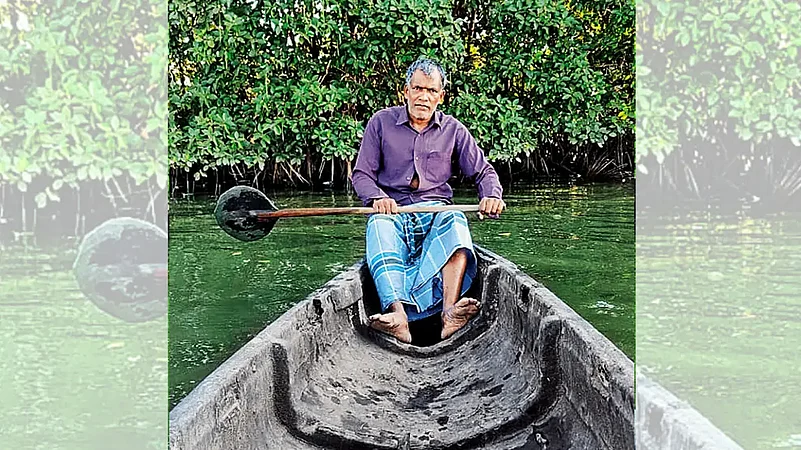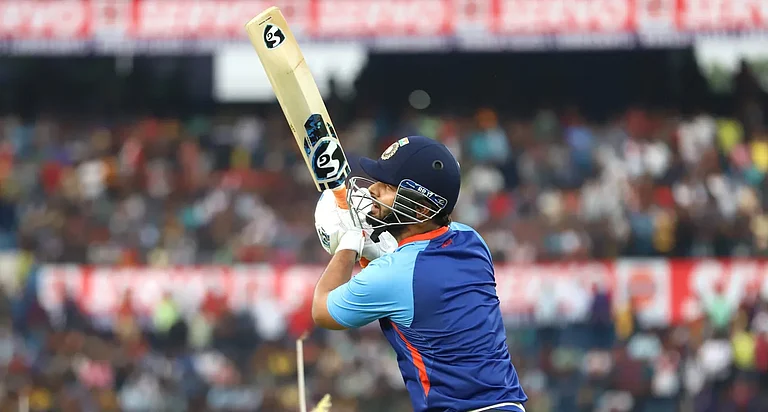By sheer numbers, 58-year-old P. Rajan’s lifetime accounts for more than 1,700-odd mangrove trees he plants every year. But statistics may not be the best way to assess his impact on the ecosystem along Kerala’s Pazhayangadi river.
There is a reason why Rajan is affectionately called ‘Kandal Rajan’. Kandal, Malayalam for mangroves, has been an obsession with the Kannur-based fisherman, who has planted nearly one lakh mangrove saplings along the river, which cuts through Kannur district in north Kerala. “I have 50,000 saplings more that need to be planted,” Rajan tells Outlook.
Fishermen tend to have a keen eye for changing colour patterns or disruption on the water surface. That’s normally where you find fish. But early on, Rajan’s vision sensed the ecological significance of mangrove clusters to his primary craft, fishing.
According to the website of the Kerala government’s Fisheries Department, mangrove destruction is a prevalent trend and one of concern. The coastal state, with an extensive river network, once boasted of a spread of 70,000 hectares of mangroves. Now, that has shrunk to a mere 1,942 hectares.
Mangroves in Kerala are being cleared out of government and private land to make way for aquaculture, farming and cultivation of lucrative integrated organic rice called kaipad. This is where an intervention, like the one made by Rajan at a relatively small scale, could prove to be the difference in Kerala’s backwater ecosystem.
“Several years ago, I noticed that my daily catch was falling. While others who fished along river-sites where there were flourishing mangroves, were pulling out a lot more. That’s when I decided to get to the bottom of this mystery,” Rajan says.
Over the years, Rajan has identified more than 20 varieties of mangroves along Kerala’s water bodies, many of which he used to create saplings from. “The floods in Kerala should be a lesson to everyone. A mangrove plants’ roots are strong and run deep in the soil, stopping erosion and preventing floods. It can also hold the soil together in the advent of a cyclone,” Rajan says.
A mangrove network is also an ideal breeding ground for fish and a healthy ecosystem for crabs, prawns, etc. The shallow mangrove canopies and creepy-crawlies in the marshy riverbanks also attract birds. “It is an entire world out there,” he adds.
After the initial success of his intensive exercise of planting mangrove saplings along the river, Rajan has now started a mangrove nursery, housing samples for nature enthusiasts to replicate his experiment elsewhere.
His day begins with a ride in his canoe to fish. On the way back, he brings with his catch a few mangrove seeds and fresh saplings for future use. And in the midst of his everyday journeys, Rajan has added a bit of green to the universe he inhabits.
(This appeared in the print edition as "Mangrove Man of Kerala")
Liked the story? Do you or your friends have a similar story to share about 'ordinary' Indians making a difference to the community? Write to us. If your story is as compelling, we'll feature it online. Click here to submit.



























